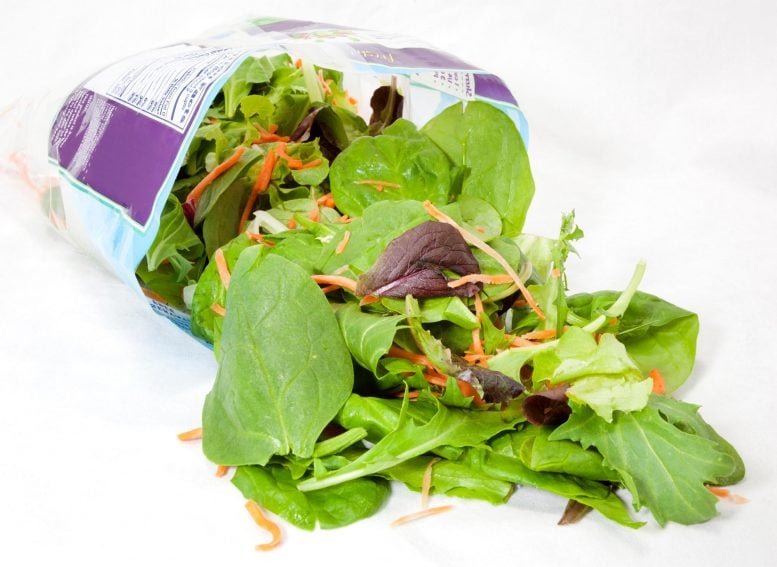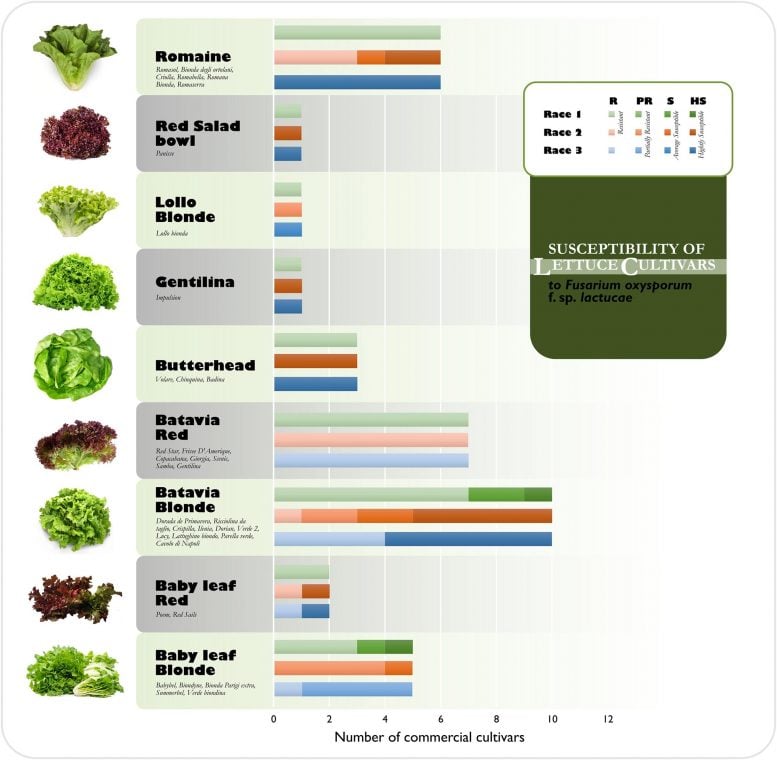
Ready-to-eat salads, also known as fresh-cut or bagged salads, have steadily gained popularity since their introduction in Europe in the early 1980s. This popularity is expected to grow, marking opportunities for the fresh food industry.
As this industry grows dynamically, so does the number of new diseases. There are many reasons for this increase according to a new review in Plant Disease. First, these seasonal products are grown under high crop density in five to six cycles annually in the same specialized farms with a lack of adequate crop rotation and a shortage of applicable fungicides.

Additionally, international trade has moved crops away from their original environments to foreign soils, where they encounter new diseases. In some cases, very low levels of seed contamination can lead to the rapid emergence of new diseases in new geographic areas, resulting in severe losses, disrupting the environment’s biological equilibrium, and sometimes launching a devastating epidemic.
Climate change is also a threat as it interacts with globalization to influence the development and spread of plant pathogens. Rising temperatures also reduce plant resistance to pathogens, which means that disease control strategies must be reevaluated to address new warmer temperatures. These new pathogens are also often characterized by a preference for high temperatures.
In the open access “Ready-to-Eat Salad Crops: A Plant Pathogen’s Heaven,” University of Torino scientists Maria Lodovica Gullino, Giovanna Gilardi, and Angelo Garibaldi discuss emerging diseases, such as a new race of Fusarium wilt and the increasing appearance of leaf spots, and the efficacy of current management practices. They also make practical recommendations for future disease management.
Reference: “Ready-to-Eat Salad Crops: A Plant Pathogen’s Heaven” by Maria Lodovica Gullino, Giovanna Gilardi and Angelo Garibaldi, 25 July 2019, Plant Disease.
DOI: 10.1094/PDIS-03-19-0472-FE